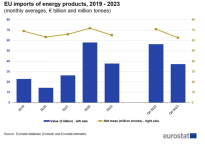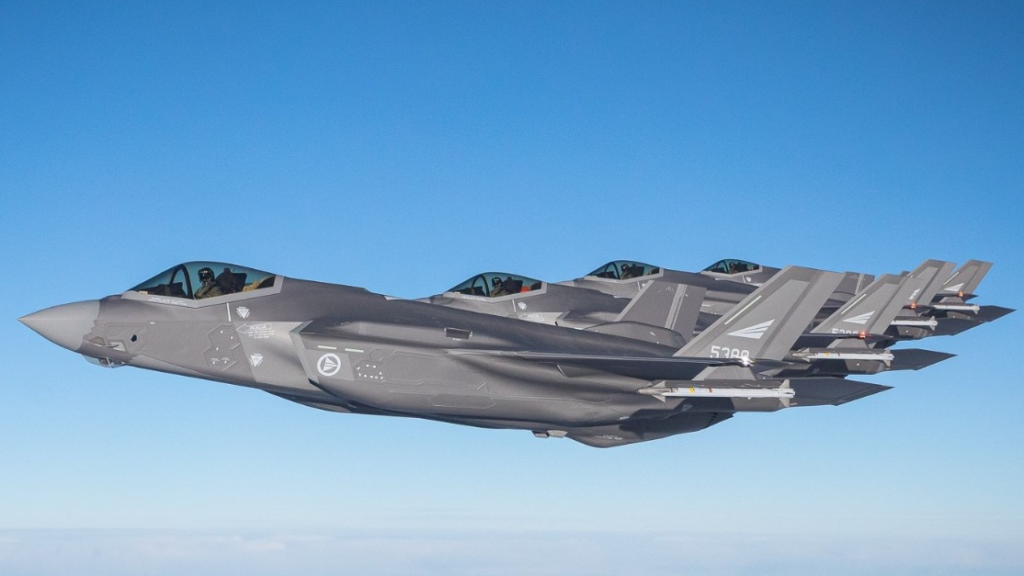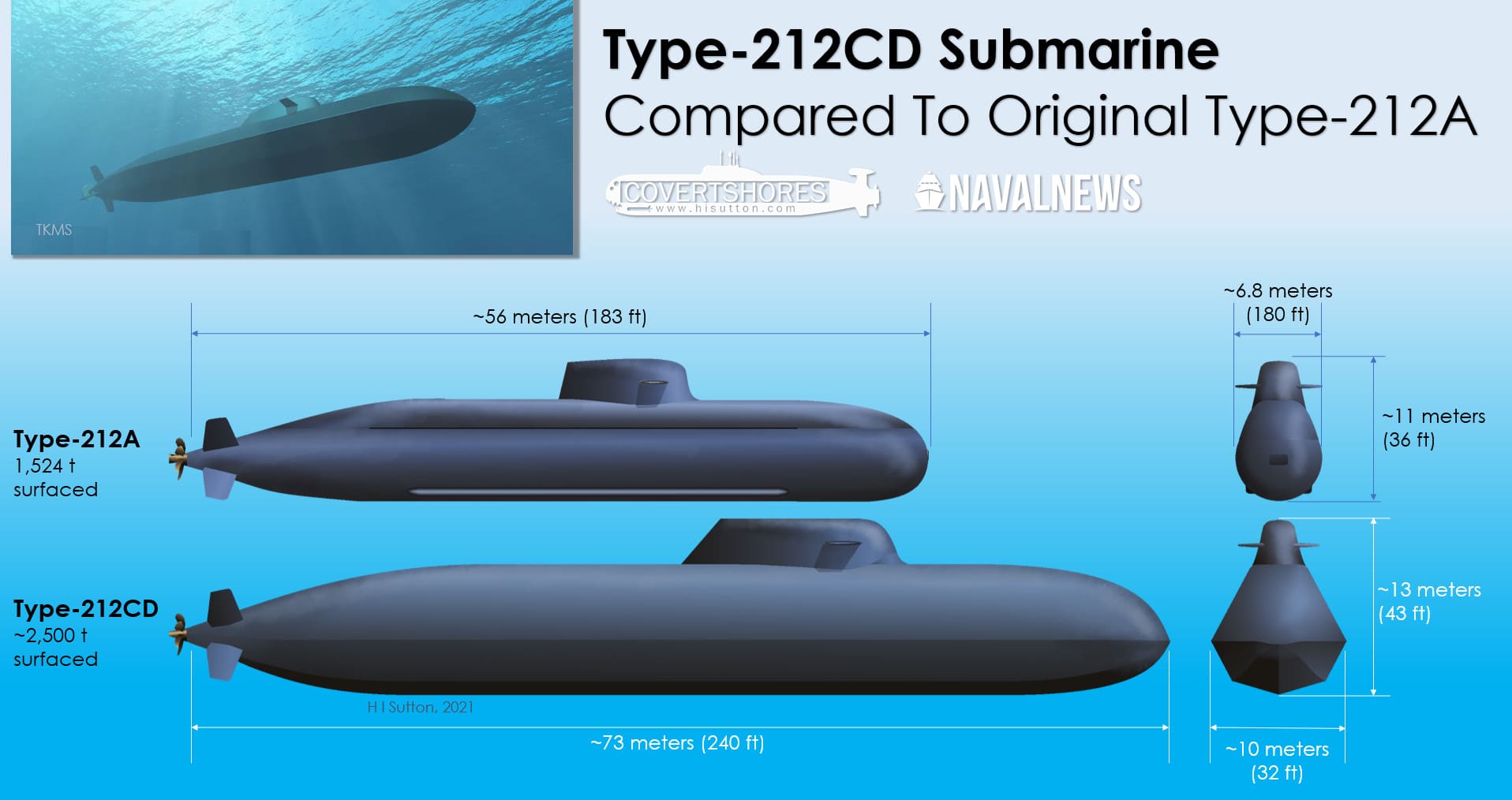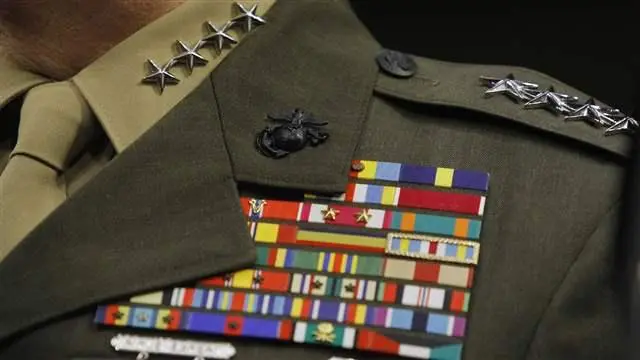I'll believe it when I see it.
You are using an out of date browser. It may not display this or other websites correctly.
You should upgrade or use an alternative browser.
You should upgrade or use an alternative browser.
Justin Trudeau hints at boosting Canada’s military spending
- Thread starter Maxman1
- Start date
- Reaction score
- 8,648
- Points
- 1,160
65 Billion CAD$.
Never. Gonna. Happen.
Canadian oil and gas exports rose significantly in 2022 and show little sign of abating despite a call by Canada’s minister of environment and climate change to ‘phase-out unabated fossil fuels.’
Total exports in Canada rose 22.5 per cent in 2022, representing an increase of more than $142 billion, says a recent Statistics Canada report. Over half the increase – $76.9 billion – was driven by a major uptick in oil and gas exports. The share of energy products as a proportion of total exports rose from 21.2 per cent in 2021 to 27.2 per cent in 2022.

Japan is the largest LNG buyer in the world, importing approximately 77 million (77,327,079) tons in 2019, down 6.6 % (tons) from 2018. Its import dollar value in 2019 was approximately $39.8 billion (4.4 trillion yen) and shares approximately 23.4% of the world's net LNG imports (330 million tons ≈ 467.9 Bcm³).
We need to find another 40 BCAD in revenue annually.
That is equivalent to the Japanese annual LNG market.
It is also something like one month of Europe's energy buy on the open market.
In 2022 our oil and gas exports increased by 76 BCAD, the increase alone in that year, when there was no business case for pipelines, was double what our defence increase needs to be.
....
We have people that want us to spend money on defence. Those same people want to give us money for fuel.
Sell fuel. Get money. Spend money. Buy defence.
Sell fuel and buy guns.
Niema problema.
- Reaction score
- 1,623
- Points
- 1,160
Weinie
Army.ca Veteran
- Reaction score
- 3,528
- Points
- 1,140
I had a 79 Lada, complete with crank.I had a Monza…
And I didn’t say recruiters or MCC. Just the back office admin. You could maybe have one CAF clerk at most and fill it with CR4s.Mixed, maybe, but surely not all. The US seems to profit by putting good NCOs in recruiting.
NCOs should remain as recruiters as should officers in MCC roles. Or just go back to MCCRs.
Again, just a an example provided as asked for.
- Reaction score
- 8,648
- Points
- 1,160

Norway to double military spending under 'historic' long-term defense plan - Breaking Defense
With emphasis on frigates and subs, the plan "represents a historic boost in defence spending, and involves a significant strengthening of all branches of the Armed Forces," said Prime Minister Jonas Gahr Støre.
BELFAST — Norway will double its military budget over the next 12 years by increasing spending by 600 billion NOK ($56 billion), part of a “historic” new defense plan announced today by Prime Minister Jonas Gahr Støre that prioritises heavy investment in new frigates and submarines to push back against Russian maritime influence in the High North and Atlantic Ocean.
at least five new frigates, accompanied by anti-submarine helicopters. Norway’s subsurface fleet will also be boosted by procurement of five new submarines, at a minimum.
In practice, this would mean acquisition of another Type 212CD vessel, with four of the German-designed subs already on order. The fleet are part of a joint German-Norwegian program, in partnership with shipbuilder ThyssenKrupp Marine Systems. A first Norwegian sub underwent construction at the company’s Kiel yard in September last year.
In both cases relating to frigates and submarines, the proposed hull count of five sits below the six recommended by Norway’s Chief of Defence, Gen. Eirik Kristoffersen, in a “Military Advice” report published last year. The plan still strongly aligns with his support for the elimination of structural armed force weaknesses, maritime surface improvements, an uplift in air defense capabilities and long range precision fires.
So stop me if we have heard this one.
Northern nation seeks ice capable ships for Coast Guard, frigates, submarines, GBAD and Long Range Precision Fires.
- Reaction score
- 8,648
- Points
- 1,160


Radical New Stealth Submarine, Type-212CD, Will Be Much Larger - Naval News
Submarines rely on stealth to maintain the element of surprise and escape threats. For decades this has focused on reducing the noise emitted by the submarine. A resurgence of using active sonar to locate submarines now means that new stealth measures may be required. German submarine builder...
Class overview | |
|---|---|
| General characteristics | |
| Builders | ThyssenKrupp Marine Systems (TKMS) |
| Operators | |
| Preceded by |
|
| Planned | 6 (4 for Norway, 2 for Germany) |
| On order | 6 |
| Building | 1 |
| Type | Submarine |
| Displacement | 2,500 t (2,500 long tons) surfaced |
| Length | 73 m (239 ft 6 in) |
| Beam | 10 m (32 ft 10 in) |
| Draught | 7 m (23 ft 0 in) |
| Propulsion | Air-independent propulsion, two MTU diesel engines[1] |
| Speed | more than 20 knots (37 km/h; 23 mph) |
| Complement | ? |
| Sensors and processing systems |
|
| Armament | 4 × 533 mm (21.0 in) torpedo tubes, DM2A4 IDAS |
- Reaction score
- 8,648
- Points
- 1,160
Further to the value of pumping oil and gas....
More supply yields lower prices, lower prices yield lower inflation.

 www.telegraph.co.uk
www.telegraph.co.uk
We all live in America's world. And the Americans are experiencing inflation twice that reported and 4 to 9 times the Upper Control Limit of the target range.
More supply yields lower prices, lower prices yield lower inflation.
The Fed, like the Bank of England, has a target of 2pc for inflation. Yet US inflation has not been below 2pc since February 2021. As of February 2024, inflation stands at 3.2pc, higher than it was in June 2023 when it bottomed out at 3pc.
So-called “sticky price” inflation less food and energy – a key metric the Fed has been watching to make sure the inflationary vampire will stay in the grave – was at 4.4pc in February 2024. Back in February 2021, this measure was at 1.4pc.
This has been a dangerous game for the Fed. After all, its credibility is currently at an all-time low after it missed the inflation to begin with, and even once the threat was apparent members thought it was “transitory”. With the Fed signalling rate cuts for four months while the actual data continued to show inflation above target, the central bank was betting the farm that it would fall.
Now, however, it appears that the Fed will have to throw in the towel. Oil prices are rising sharply. Brent oil currently stands at over $90 a barrel, up from just over $73 a barrel in mid-December around the time the Fed started priming the market for rate cuts.

The US Fed may kill the Biden presidency
A credibility crisis is building at the central bank as politics trumps policy
A recent paper led by former treasury of the secretary Larry Summers has helped clear up the discrepancy. Summers and his co-authors show that if we adjust American inflation data to consider changes in methodology that have taken place over the past few decades, we see inflation not peaking at 9pc, as the official data indicates, but rather at 18pc. The paper also suggests that inflation measured in line with historical norms would have been 8pc at the end of 2023, not the 3pc shown in the official statistics.
This explains why the average American voter is angry at Biden about the economy: prices are still rising at a rapid clip and living standards have been substantially eroded under his administration.
We all live in America's world. And the Americans are experiencing inflation twice that reported and 4 to 9 times the Upper Control Limit of the target range.
daftandbarmy
Army.ca Dinosaur
- Reaction score
- 34,322
- Points
- 1,160
Meanwhile, in Norway 
Norway plans to raise its military spending by an accumulated 600 billion crowns ($56 billion) through 2036 to bolster its defence against Russia and other security challenges, the NATO member country's government said on Friday.
Overall military spending for the next 12 years is expected to amount to 1.62 trillion crowns, it said.
"This plan represents a historic boost in defence spending, and involves a significant strengthening of all branches of the armed forces," Prime Minister Jonas Gahr Stoere told a press conference.
Norway plans $56 billion defence boost to counter Russia
Norway plans to raise its military spending by an accumulated 600 billion crowns ($56 billion) through 2036 to bolster its defence against Russia and other security challenges, the NATO member country's government said on Friday.
Overall military spending for the next 12 years is expected to amount to 1.62 trillion crowns, it said.
"This plan represents a historic boost in defence spending, and involves a significant strengthening of all branches of the armed forces," Prime Minister Jonas Gahr Stoere told a press conference.
- Reaction score
- 7,959
- Points
- 1,310
Norway, like most of the European countries that were invaded during the Second World War, have a long memory and took great lengths to remind their children of the plight they experienced under occupation. Its also why they are very quick to open the coffers to rearm and get ready to fight, because the alternative is much worse.Meanwhile, in Norway
Canada hasn't had to learn that lesson, and thus here we are cutting defence spending while the world rearms and gets more dangerous.
OldSolduer
Army.ca Relic
- Reaction score
- 16,416
- Points
- 1,260
You sir speak wisely.Norway, like most of the European countries that were invaded during the Second World War, have a long memory and took great lengths to remind their children of the plight they experienced under occupation. Its also why they are very quick to open the coffers to rearm and get ready to fight, because the alternative is much worse.
Canada hasn't had to learn that lesson, and thus here we are cutting defence spending while the world rearms and gets more dangerous.
A wise Jedi you are. (Yoda said this, not me)
In 1996 I had the good fortune to down several beers with a German captain who said "Russia is too close".
Halifax Tar
Army.ca Fixture
- Reaction score
- 12,394
- Points
- 1,260
Then why put soldiers and sailors in what are essentially civilian functions?
Because sailors and soldiers need positions to establish a work life balance, and those same folks need to develop trades skills that can only be attained at a level behind the Bn OR, QM ect.
For CSS folks an understanding of lines behind 1st and how they work is intimately important.
Last edited:
- Reaction score
- 20,449
- Points
- 1,280
I think each service does it differently (surprise surprise) but I’ve talked to a USMC assistant recruiter (they have folks who help out sometimes) and the main recruiters have a minimum quota.Mixed, maybe, but surely not all. The US seems to profit by putting good NCOs in recruiting.
That gives them a huge incentive to get people in the door, but also has negative effects.
daftandbarmy
Army.ca Dinosaur
- Reaction score
- 34,322
- Points
- 1,160
I think each service does it differently (surprise surprise) but I’ve talked to a USMC assistant recruiter (they have folks who help out sometimes) and the main recruiters have a minimum quota.
That gives them a huge incentive to get people in the door, but also has negative effects.
The elephant has entered the room
Understanding the steady and troubling decline in the average intelligence of Marine Corps officers


Understanding the steady and troubling decline in the average intelligence of Marine Corps officers | Brookings
After analyzing test scores of 46,000 officers who took the Marine Corps’ required General Classification Test (GCT), Michael Klein and Matthew Cancian find that the quality of officers in the Marines, as measured by those test scores, has steadily and significantly declined since 1980.
Quirky
Army.ca Veteran
- Reaction score
- 3,861
- Points
- 1,260
Trudeau says Canada pledges to ‘do more’ on NATO spending | Power Play with Vassy Kapelos
Do more doesn't mean increase.
Brad Sallows
Army.ca Legend
- Reaction score
- 8,951
- Points
- 1,040
"Do more" is the chorus in the song sung by these people; "do more" is code for "table the motion".Do more doesn't mean increase.
GK .Dundas
Army.ca Veteran
- Reaction score
- 1,739
- Points
- 960
Translation; We intend to kick this down the road......again.
- Reaction score
- 6,558
- Points
- 1,040
If the ships are run and maintained; for context in the last year we've had two ships flood alongside with no crew onboard after they were mothballed due to lack of people. When pipes fail outside of machinery spaces there is no detection fitted to pick that up, and a few tonnes of water up high enough is really bad. People are aware of that but nothing has actually been done to address it, and now they want to have more ships with no duty watch onboard.Considering how long it takes to build ships, that almost sounds like an idea for having a navy that can expand rapidly in emergencies - provided the ships are run often enough.
Our ships that are run have a lot of single digit percentage maintenance completion rates (because it takes people and time to maintain things), which is down to in a lot of cases maintenance not being done for long enough that when they go to to preventative maintenance there is a lot of corrective maintenance instead.
We don't even meet our own low standards for 'safe at sea' equipment and maintenance for ships that get deployed to HR deployments, and that's with robbing the standard and low readiness ships to try and get them out the door.
The TL
Best case a few ships 'self retire' without hurting or killing people, because the institution is too stupid to call uncle. That's basically what happened with the 280s and tankers (althought there were few career ending injuries prior to the final straws, along with a lot of people with issues from the mold).
For all the stories that do make the news, the reality is worse, and frankly the ships are probably a liability on real operations as the RCN's 'risk based approach' is just to bet the house that nothing actually happens. If we applied the lower commercial safety standards, most of the fleet wouldn't be allowed to leave the walls under TC rules, and that's with the extra combatant capabilities built into the design. They don't matter if they don't work and the people don't mitigate it if we're in skeleton crews..
Brad Sallows
Army.ca Legend
- Reaction score
- 8,951
- Points
- 1,040
Yes.If the ships are run and maintained
- Reaction score
- 29,326
- Points
- 1,090
So, you're saying it's time to ATI the Protecteur BOI?Best case a few ships 'self retire' without hurting or killing people, because the institution is too stupid to call uncle. That's basically what happened with the 280s and tankers (althought there were few career ending injuries prior to the final straws, along with a lot of people with issues from the mold).
QV
Army.ca Veteran
- Reaction score
- 3,510
- Points
- 1,010
Work life balance is achieved through a proper ops tempo cycles, not shoving soldiers sailors into critical and understaffed support positions that now lack continuity becUse of regular posting cycles. They should be in rest/refit mode rather than a “shore posting”. What i suggest is no doubt radical and would lead to more troop downtime and a larger force requirement but Canada could actually make a real contribution and scale up for those critical times.Because sailors and soldiers need positions to establish a work life balance, and those same folks need to develop trades skills that can only be attained at a level behind the Bn OR, QM ect.
For CSS folks an understanding of lines behind 1st and how they work is intimately important.
Similar threads
- Article
- Replies
- 618
- Views
- 239K
- Replies
- 28
- Views
- 13K
- Replies
- 3
- Views
- 4K
- Replies
- 34
- Views
- 13K
- Replies
- 294
- Views
- 59K




